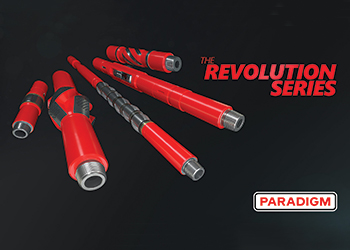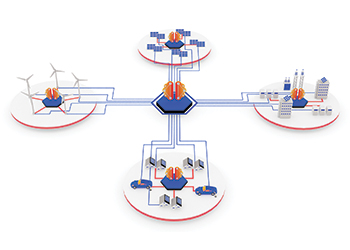
 Smart luminaires by Zalux
Smart luminaires by Zalux
Lighting accounts for a significant proportion of energy costs at oil and gas facilities, and a notable toll on maintenance overheads.
However, smart lighting, using latest LED technology, presents an ‘easy win’ opportunity for sites to save money, improve lighting quality, and increase sustainability, says Jesús Fernández, Product Manager at Zalux.
"Lighting with smart movement and daylight sensors, combined with a proper management system, will automatically adapt to changes in light and activity," he adds.
This means lights are not left on if they are not needed, optimising the use of electricity and helping improve sustainability performance.
Compared with traditional fluorescent lighting, modern LED technology on its own reduces energy consumption by around 70 per cent.
Combined with smart sensors, however, sites are looking at savings of up to 85 per cent in lighting running costs.
In turn, this equates to not only a quick return on investment, but a lower overall carbon footprint.
Additional sustainability and reduced cost of ownership are further facilitated through the integration of wireless communications and internal sensors within lighting fixtures that can predict maintenance requirements.
Smart luminaires can include sensors to monitor the temperature and electrical parameters to give warning if a failure is imminent.
 |
Latest Zalux LED luminaires can operate at up to 75 deg C |
This not only ensures enhanced reliability with reduced chance of unexpected failure, but also means maintenance activities can be fully optimised, reducing time and cost overheads of the system.
Many oil and gas applications have harsh environments, and locations may make operation and maintenance more challenging.
First, luminaires must be certified under EX and IECEX standards (among others). This is mandatory.
Then, luminaires must also ensure safe operation.
For longevity, however, their construction should also be resilient to corrosive substances, including chemicals and salt.
Harsh environments may additionally require wide operating temperatures.
Alongside EX and IECEX certifications for Zone 1 or Zone 2 installations, latest LED luminaires can operate at up to 75 deg C, use innovative PMMA housing materials to make them resilient to corrosives, and provide gas tight seals to ensure sophisticated electronics are not damaged by any corrosive atmospheric gases that may be present.
Very few manufacturers are able to guarantee this high specification.
Supplying luminaires that operate at 75 deg C is particularly rare, but one provider who has the capability is the protected lighting specialist, Zalux, with its Made in Europe explosion proof luminaires.
EASY UPGRADE, LONG LIFE
Upgrading lighting is not a difficult win. Ageing installations often need to upgrade electrical devices and the benefits of taking this opportunity to upgrade conventional lighting to new LED technology with smart control will deliver better lighting efficiency, greater resilience to extreme temperatures, lower energy consumption, and reduced maintenance. Indeed, the expected return on investment is within two years.
Traditional luminaires have a typical operating life of around 10,000 hours.
LED technology offers 10 times this, which equates to around 20 years of operational life.
Other considerations include recyclability.
Modern plastics, such as PMMA, used in new lighting fixtures are 100 per cent recyclable.
Unlike fluorescent tubes, they also do not contain mercury, which is difficult to dispose of and dangerous to the environment.
In fact, legislation is moving to stop the manufacture of fluorescent tubes because of the impact they can have on the ambience.
By using modern plastics, luminaires also become much lighter and easier to install.
In addition to the ease of installation, wireless technology allows traditional installations with non-dimmable luminaires to be updated with new dimmable fittings without the need of rewiring.
So, this is a great benefit in refurbishment projects and increases their profitability.
The installations also get the advantages of predictive management, better use of the light and energy savings.
A BRIGHTER FUTURE
Ultimately the question of upgrade to modern LED technology to meet lighting needs offshore and onshore is not a question of ‘if’ but ‘when’.
The longevity of traditional luminaires is waning and there are so many benefits to be gained from upgrading, for operators, workforce and the environment.
For oil and gas applications, new luminaires need to be holistically designed.
To do it, eco-design techniques are applied to analyse the impact of the luminaire during its lifecycle in terms of environmental impact and carbon footprint.
They must also include relevant safety certification – EX and ICEX standards, among others – but they should also address the need for:
• Fully optimised energy consumption with the latest LED technology, which have a high energy efficiency.
• Reduced installation overheads with necessary EX quick fit accessories, long cables for direct connection to junction boxes, and wireless technology. Also, with smart controls, less installation costs thanks to a simpler, more flexible and faster commissioning.
• Reduced maintenance costs by avoiding unnecessary inspection and providing intelligent, predictive information to engineers over wireless communications.
• Be light and robust, ensuring they are easy to handle and install and can withstand the rigours of heavy industry application thanks to high degrees of protection against impacts or presence of chemicals.
• Consider all aspects of sustainability, starting on the products design phase, from manufacturing carbon footprint, through optimised energy efficiency, to the use of fully recyclable materials at end of life.
To meet all these requirements, proficiency in both lighting electronics and modern plastics is required. It is only by combining these areas of expertise that the longevity, reliability and efficiency of the luminaire can be assured in harsh and often dangerous environments, including hazardous areas or those with risk of explosion.
SUMMARY
Latest lighting solutions are an easy win in the battle for sustainability. The combination of highly efficient lighting technology, smart control and sensors, mean every aspect of the luminaire can be fully optimised.
Combined with careful selection of materials to produce a safe, highly robust, and fully recyclable housing solution, and a design that is easy to install and maintain, the benefits simply cannot be ignored.
THE FUTURE
Lighting solutions continue to be developed to offer increasing efficiency, reduced manufacturing carbon footprint and to consider latest materials, including biodegradable options.
For today, the gains in efficiency and environmental protection are already huge, but manufacturers are not standing still and are looking for even greater savings and sustainability to ensure we all have a brighter future. –Tradearabia News Service
























































































